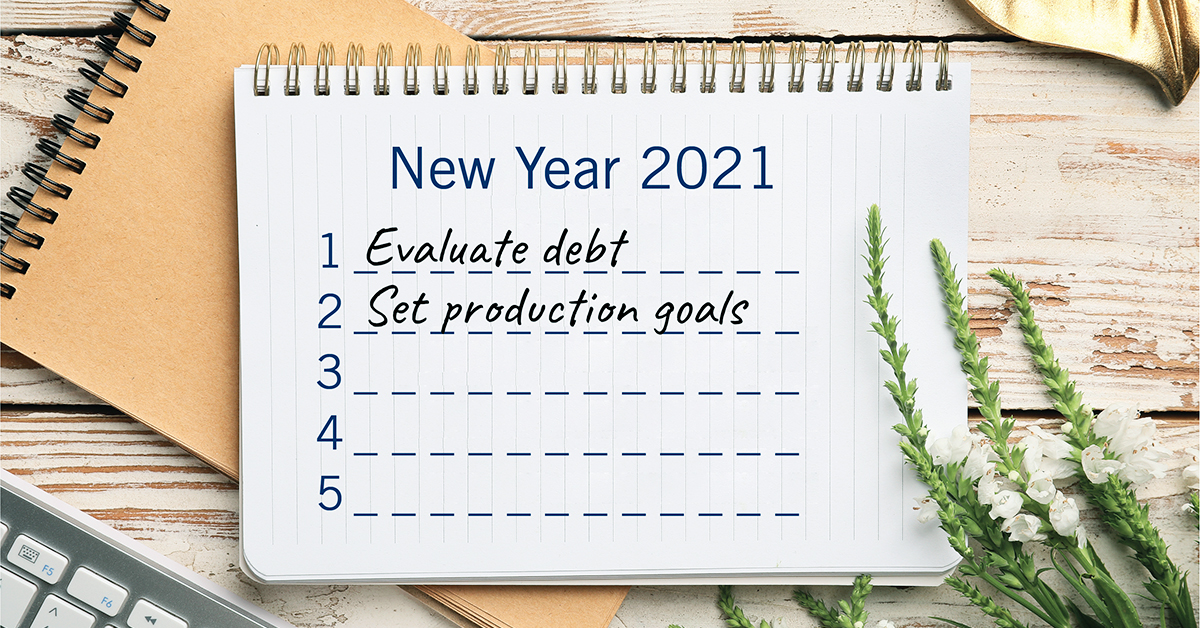Fast track financial success with five actions you can take now
We’ve finally said goodbye to 2020. Given the unpredictable nature of the previous year, many are breathing a sigh of relief. 2021 is being welcomed as the year of opportunity and a chance to get back on track. As the new year kicks into high gear, this is the time to get into a growth mindset and chart a path for the months ahead.
We asked Judson Crawford, CPA and co-host of the Accumulating Wealth Podcast, to suggest a few simple steps for any dental professional pursuing financial success in 2021. Here are his suggestions to get the year started right:
Evaluate debt
“It’s very much worthwhile to look at all of your debt because we’re at all-time lows for interest rates,” explains Judson. “Most of my clients have refinanced their homes this year which allows for lower payments and increased cash flow. That opens you up to be able to focus on other financial priorities, like saving for retirement.”
Rates are also extremely low for business loans. Consider asking your bank for a rate reduction for outstanding debts related to your dental practice. Banks are often willing to do this because they simply do not want to lose a customer to another bank. As a result, the amount you pay toward your principal each month will increase, paying down debt more quickly. If you’re planning significant capital expenditures for your practice, it is a good time to wrap all of your debt together to maximize a low rate.
Finally, if you took advantage of PPP funds and haven’t applied for forgiveness: now’s the time to do it. Don’t delay.
Set production growth goals
“Last year’s production is likely going to be lower than what it was in 2019 because of shutdowns,” Judson acknowledges. “Many practices had a better summer than expected then tapered off in November and December, as usual. It is important to get out of the pandemic mindset and get back to the prospect of setting production goals for growth. It’s time to get past the defensive mindset and knock the socks off this thing in 2021.”
To gauge 2021 goals, Judson suggests evaluating past financial data. Because 2020 was so unusual, consider looking at the full year of 2019 and use that production for goal setting. Or, analyze the previous 12 calendar months, not counting those months with pandemic-related closures.
“There are unknowns we cannot predict. But, my clients’ acceptance rates are through the roof. I have a theory that after months stuck at home, people may be tired of looking at their imperfect smile in the mirror every day,” jokes Judson. “So, they’re ready to fix an ugly tooth and accept procedures.”
Each year, January is a good time to revisit fees, especially if you did not in 2020 due to the pandemic. Consider that supply costs are higher because of additional PPE requirements. You need to allocate for those expenditures. In addition, raising fees is one way to increase collections without having to do more with your existing staffing capacity.
Given consumer behaviors and economic realities, it may also be a good time to try a flexible payment plan pilot program. If your acceptance rates have yet to return to pre-pandemic levels, flexible options may be a fit for your patients.
Re-energize marketing
“Many practices absolutely cut their marketing expenses during the pandemic in an effort to reduce expenses. Even so, this is a vital component to growth in 2021,” notes Judson. “It’s just a fact that there have been permanent practice closures and those patients will need a new dentist. New marketing initiatives will get you into the ears of those patients so you can provide their dental services.”
In the new season of the Accumulating Wealth Podcast, Judson and his co-host Hunter Satterfield focus on the essential elements of marketing for dental practices. Listen and subscribe for insights and tips on how to garner more patient referrals, digital marketing, updating your website, social media, and more.
Save for retirement
“One of the good things about qualified retirement plans – 401(k)’s or defined benefit plans – is that you still have time to maximize those plans if you got off track in 2020,” says Judson. “You may be able to make some contributions now to alleviate this.”
For example, if you extend your tax return, you can take until September 15, 2021 to fund your qualified plan. If you have a 401(k) and are under 50, your maximum contribution will be $57,000. With a spousal contribution, that figure could be as high as $76,500. If you’re over 50, you may also contribute an extra $6,500 for both you and your spouse for a total of $89,500.
Judson also urges everyone to revisit contributions: “Pre-pandemic, we had all of our clients saving monthly with automatic drafts; however, some opted out during the pandemic. Now’s the time to reset your savings so you don’t end up even further behind.”
Avoid tax surprises
“This biggest hitch in putting 2020 behind you could be a tax surprise at the end of the first quarter of 2021,” cautions Judson. “Retirement savings can help. But, only so much.”
Avoid a curveball in March or April by meeting with your financial advisor, tax advisor, or CPA as soon as possible. Due to PPP and other pandemic-related stimulus programs, your taxable income may be higher than you are expecting. However, if you have a large tax liability, there may still be time to address it before it’s too late. That’s why meeting with an advisor now is so important.
If you don’t have a relationship with a skilled advisor, CWA can help you get on a path to success in 2021. Reach out today for a no-commitment, free consultation with one of our financial professionals. Beyond these essential five actions, we can help you start the year confidently, with solid advice and actionable insights for a success.














